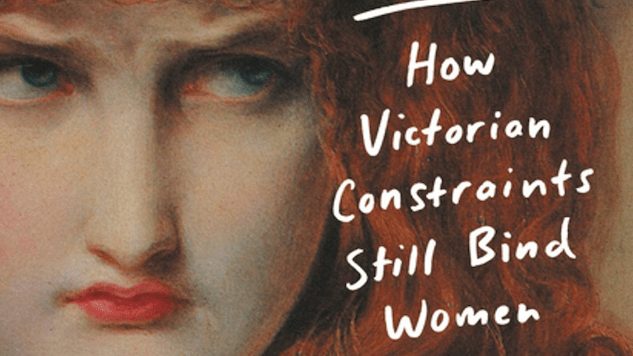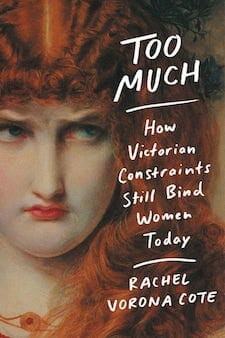Victorian Women Were Judged, and Too Much Reveals Why That Matters Today

In her debut book, Too Much: How Victorian Constraints Still Bind Women Today, Rachel Vorona Cote examines how Victorian women were scrutinized for deviating from the norm and why that matters in the 21st century.
Vorona Cote blends memoir and criticism to build a bridge between the 21st century and the 19th, acknowledging in the book’s introduction that she’s exploring predominantly white and cisgender experiences in both eras. Placing Victorian writers like Lewis Carroll and the Brontë sisters alongside modern figures like Beyoncé and Beverly Cleary, Vorona Cote explains what behaviors Victorians deemed “too much” in a woman and how those same judgments influence how we police behaviors today. She also makes convincing links between 19th-century beauty fads and 21st-century weight shaming, anxiety about close female friendships across the centuries, and our cultural instincts to cast blame for infidelity and adultery.
 What it means to be “too much” or have “too muchness” is left open-ended. In a world where women are blamed for not fitting in a given box, there’s no shortage of ways to catalog our supposed excesses. From weight to friendships and aging to sexuality, to be “too much” is to be human Vorona Cote argues.
What it means to be “too much” or have “too muchness” is left open-ended. In a world where women are blamed for not fitting in a given box, there’s no shortage of ways to catalog our supposed excesses. From weight to friendships and aging to sexuality, to be “too much” is to be human Vorona Cote argues.
To call this book a historical accounting of our modern sensibilities is too narrow. Vorona Cote is more often her own example, and each chapter is built around her experiences. This combination of memoir and critique is tricky to pull off; Too Much sometimes feels as if it’s two books knit together with a fault line that isn’t sealed. Vorona Cote’s academic background successfully comes through in her writing about literature, film and culture. When she reflects on cheating, lost friendships or her relationship with her mother, however, her prose reads like she’s trying to work through the puzzle of herself—intimate and sometimes raw, less eager to find answers than in explaining some truth.
Too Much’s wide-ranging nature—in terms of genre and subject matter—is both to its benefit and disadvantage. On one hand, it’s fascinating (if not particularly surprising) to see how little has changed over the centuries. The Victorians gave us much in the way of invention and in the way of unrealistic ideals for womanhood. Self-sacrifice, temperance in all things, subservience—the packaging of these supposed virtues may have changed since 1860, but they still dominate the feminine framework. But the book’s tonal shifts and subject changes overwhelm that throughline.
Vorona Cote casts Too Much as an opening foray into a complex web of study—not a comprehensive review of the interplay between Victorian outlooks and today’s pressures. The book’s ambition belies that at times, and it would have benefited from a narrower focus and approach. But Vorona Cote achieve the goal of illuminating the links between our world and that of the Victorians, highlighting links that aren’t apparent on first glance.
Bridey Heing is a freelance writer based in Washington, DC. More of her work can be found on her website.







































